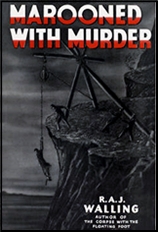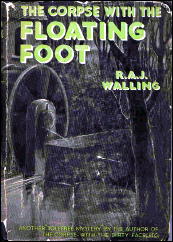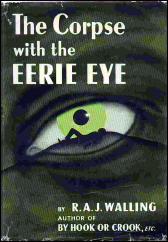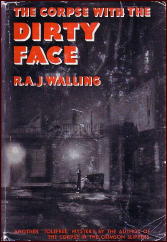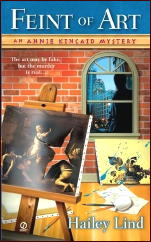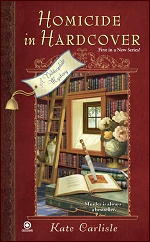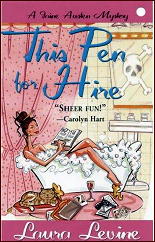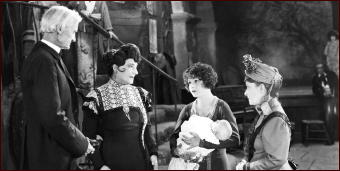Mon 21 Mar 2011
HERE COMES THE JUDGE: THE “NERO” AWARD, 1979, by Bill Crider.
Posted by Steve under Awards[11] Comments
by Bill Crider
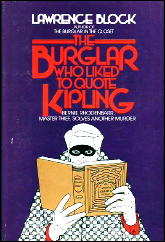
The first annual “Nero” award, named for Nero Wolfe and given in honor of his creator, Rex Stout, was won by Lawrence Block for The Burglar Who Liked to Quote Kipling. The award, a replica of Wolfe’s famous gold bookmark, was presented at a Black Orchids Dinner, December 1, 1979, in New York City. The winner was chosen by a panel of judges named by the Stout fan club known as The Wolfe Pack.
This award was of special interest to me because I was one of the judges. I have no real idea why I was selected to serve, as I am not a member of the Wolfe Pack and I am hardly so deluded as to think that my reputation for criminous knowledge has spread even unto the Wolfe Pack hierarchy. But I have been corresponding with John McAleer, Stout’s biographer, for a number of years, and I even helped him a tiny bit in his researches. Maybe he wanted to do me a favor.
At any rate, I was told that I should try to judge the books I received by how well they carried on the tradition of Rex Stout. I took that to mean that I should look for a book that had some of the qualities of Stout’s work, rather than one that simply imitated the master. The catch was that publishers were asked to nominate books, and the judges could make their selections only from those books which the publishers nominated.
In a way, this made my job easier. Many publishers obviously had no idea about the tradition of Rex Stout, and I had to read only a few pages of the books to see that they wouldn’t do at all. Some of them I finished; others, I didn’t.
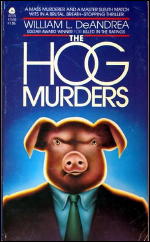
For example, Doubleday submitted, among others, Domino, by Phyllis A. Whitney. Now, some of my best friends like Phyllis A. Whitney, but a gothic set in Colorado is not my idea of a book which is in any way like anything Rex Stout wrote.
Lippincott sent The Green Ripper, which was not bad MacDonald but which wasn’t really even a mystery. (One of my criteria was that the book had to be a mystery, which eliminated not only MacDonald but such spy stories as Victor Canning’s Birdcage and Campbell Black’s Brainfire.)
Some of the actual mysteries eliminated themselves, like Stephen Greenleaf’s Grave Error, which was too slow and too much like Ross Macdonald. Then there was The Reggis Arms Caper by Ross Spencer, not a bad joke, but the joke’s getting a little thin.
What it boiled down to was that as far as I was concerned, there were only four real contenders in the group of books that I had to select from. I thought that since there were a number of other judges, there might have to a compromise. There might have been on the part of others, but my first choice was the winner, Block’s Burglar. Only the top prize was awarded, so my other choices weren’t really necessary.
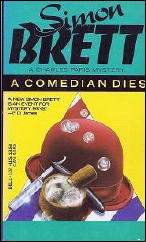
I voted for Block’s book because I like the way he handles first person narration; while Bernie the burglar is no Archie, he’s pretty good. Besides, the book is a real mystery, in which the suspects are called together at the end. And the relationships among the characters are well done.
My second choice, I have to admit, was more obviously based on the Wolfe books. It was William DeAndrea’s The Hog Murders, an Avon paperback original. As DeAndrea is a member of The Wolfe Pack, it’s just as well he didn’t win; as some might have thought that the judging was rigged.
Other books that I considered in the running were Simon Brett’s A Comedian Dies and Marvin Kaye’s My Brother, the Druggist. These latter three, however, were my personal choices; I don’t know how the other judges felt about them.
Judging the award was an interesting experience, and I got a huge stack of free books for my shelves. Apparently the Wolfe Pack was satisfied with the work of all the judges and may be using the same panel again for the 1980 award. That will be fine with me. I just can’t turn down a free copy of a good mystery. Or even a bad one.
The one thing I learned from my experience is that there is no one to replace Rex Stout. Nero and Archie are unique. We’ll never see their like again.
Coming soon to this blog:
Bill reviews The Hog Murders and My Brother, the Druggist.
THE NERO AWARD WINNERS:
* 1979 – The Burglar Who Liked to Quote Kipling by Lawrence Block
* 1980 – Burn This by Helen McCloy
* 1981 – Death in a Tenured Position by Amanda Cross
* 1982 – Past, Present and Murder by Hugh Pentecost
* 1983 – The Anodyne Necklace by Martha Grimes
* 1984 – Emily Dickinson is Dead by Jane Langton
* 1985 – Sleeping Dog by Dick Lochte
* 1986 – Murder in E Minor by Robert Goldsborough
* 1987 – The Corpse in Oozak’s Pond by Charlotte MacLeod
* 1988 – no award presented
* 1989 – no award presented
* 1990 – no award presented
* 1991 – Coyote Waits by Tony Hillerman
* 1992 – A Scandal in Belgravia by Robert Barnard
* 1993 – Booked To Die by John Dunning
* 1994 – Old Scores by Aaron Elkins
* 1995 – She Walks These Hills by Sharyn McCrumb
* 1996 – A Monstrous Regiment of Women by Laurie R. King
* 1997 – The Poet by Michael Connelly
* 1998 – Sacred by Dennis Lehane
* 1999 – The Bone Collector by Jeffery Deaver
* 2000 – Coyote Revenge by Fred Harris
* 2001 – Sugar House by Laura Lippman
* 2002 – The Deadhouse by Linda Fairstein
* 2003 – Winter and Night by S.J. Rozan
* 2004 – Fear Itself by Walter Mosley
* 2005 – The Enemy by Lee Child
* 2006 – Vanish by Tess Gerritsen
* 2007 – All Mortal Flesh by Julia Spencer-Fleming
* 2008 – Anatomy of Fear by Jonathan Santlofer
* 2009 – The Tenth Case by Joseph Teller
* 2010 – Faces of the Gone by Brad Parks

